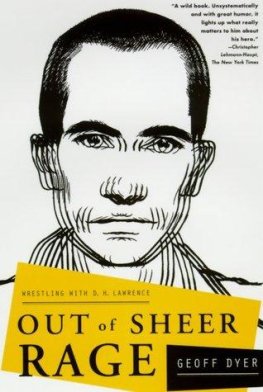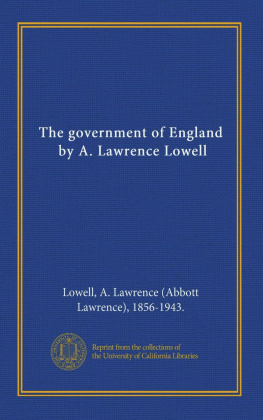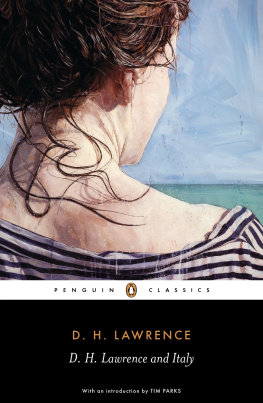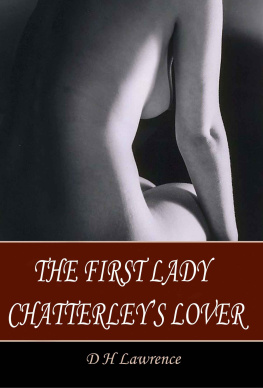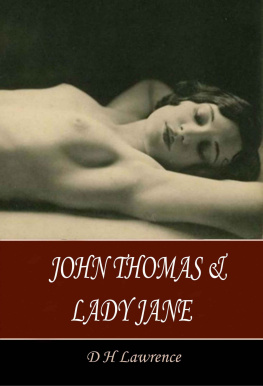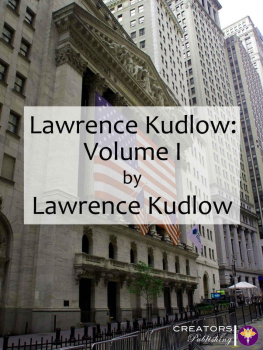D. H. Lawrence [Lawrence - Sons and Lovers [Annotated Version]
Here you can read online D. H. Lawrence [Lawrence - Sons and Lovers [Annotated Version] full text of the book (entire story) in english for free. Download pdf and epub, get meaning, cover and reviews about this ebook. year: 2011, publisher: Bentley Loft Classics Books, genre: Detective and thriller. Description of the work, (preface) as well as reviews are available. Best literature library LitArk.com created for fans of good reading and offers a wide selection of genres:
Romance novel
Science fiction
Adventure
Detective
Science
History
Home and family
Prose
Art
Politics
Computer
Non-fiction
Religion
Business
Children
Humor
Choose a favorite category and find really read worthwhile books. Enjoy immersion in the world of imagination, feel the emotions of the characters or learn something new for yourself, make an fascinating discovery.
- Book:Sons and Lovers [Annotated Version]
- Author:
- Publisher:Bentley Loft Classics Books
- Genre:
- Year:2011
- Rating:5 / 5
- Favourites:Add to favourites
- Your mark:
- 100
- 1
- 2
- 3
- 4
- 5
Sons and Lovers [Annotated Version]: summary, description and annotation
We offer to read an annotation, description, summary or preface (depends on what the author of the book "Sons and Lovers [Annotated Version]" wrote himself). If you haven't found the necessary information about the book — write in the comments, we will try to find it.
D. H. Lawrence [Lawrence: author's other books
Who wrote Sons and Lovers [Annotated Version]? Find out the surname, the name of the author of the book and a list of all author's works by series.
Sons and Lovers [Annotated Version] — read online for free the complete book (whole text) full work
Below is the text of the book, divided by pages. System saving the place of the last page read, allows you to conveniently read the book "Sons and Lovers [Annotated Version]" online for free, without having to search again every time where you left off. Put a bookmark, and you can go to the page where you finished reading at any time.
Font size:
Interval:
Bookmark:



transmitted in any form or by any means, electronic or mechanical,
including photocopy, recording, or any information storage and
retrieval system, without the prior written permission of the publisher.
Sons and Lovers
| 1885 | David Herbert Lawrence is born on September 11 in Eastwood, Nottinghamshire, a working-class mining town in central England. The sickly Lawrence is confined to bed for much of his early childhood and grows close to his mother, who tends to him. |
| 1898-1901 | Lawrence attends Nottingham High School on a scholarship, then takes a job as a clerk in a surgical appliance factory, but he leaves after suffering an attack of pneumonia. His brother, Ernest, dies in October 1901. |
| 1902- | Lawrence takes a part-time teaching job at the British |
| 1906 | Schools in Eastwood and attends a teacher-training center in Ilkeston. |
| 1906 | Lawrence enrolls at University College, Nottingham, to get his teachers certificate; he leaves after two years. |
| 1909-1910 | The English Review publishes several of Lawrences poems. His mother, Lydia, dies in December 1910; Lawrence assists her by administering an overdose of morphine. |
| 1911 | Lawrences first novel, The White Peacock, is published. |
| 1912 | Lawrence and Frieda von Richthofen, the wife of Lawrences former Nottingham professor Ernest Weekley and sister of famous aviator Manfred von Richthofen, run away to Germany and Italy. |
| 1913 | Rejected at first by Heinemann Publishers, the autobiographical Sons and Lovers is published. Criticized for his graphic depiction of sexual relations, Lawrence defends himself by stating that whatever the blood feels, and believes, and says, is always true. |
| 1914 | World War I breaks out. Lawrence and Frieda marry on July 13. Unable to obtain passports, for the duration of the war they are forced to live in various places in England, including Cornwall and Derbyshire, where they share a house with John Middleton Murray and the writer Katherine Mansfield. |
| 1915 | Upon the publication of The Rainbow, Lawrence is prosecuted for his liberal use of profanity and graphic descriptions of sex, and the novel is suppressed. More than 1,000 copies of the book are burned. |
| 1916 | Lawrence is introduced to Lady Ottoline Morrell, the wife of a liberal member of Parliament, and she becomes one of his most important patrons. Through her, Lawrence forms friendships with Aldous Huxley, E. M. Forster, and Bertrand Russell. |
Font size:
Interval:
Bookmark:
Similar books «Sons and Lovers [Annotated Version]»
Look at similar books to Sons and Lovers [Annotated Version]. We have selected literature similar in name and meaning in the hope of providing readers with more options to find new, interesting, not yet read works.
Discussion, reviews of the book Sons and Lovers [Annotated Version] and just readers' own opinions. Leave your comments, write what you think about the work, its meaning or the main characters. Specify what exactly you liked and what you didn't like, and why you think so.

![D. H. Lawrence [Lawrence Sons and Lovers [Annotated Version]](/uploads/posts/book/61295/thumbs/d-h-lawrence-lawrence-sons-and-lovers.jpg)
